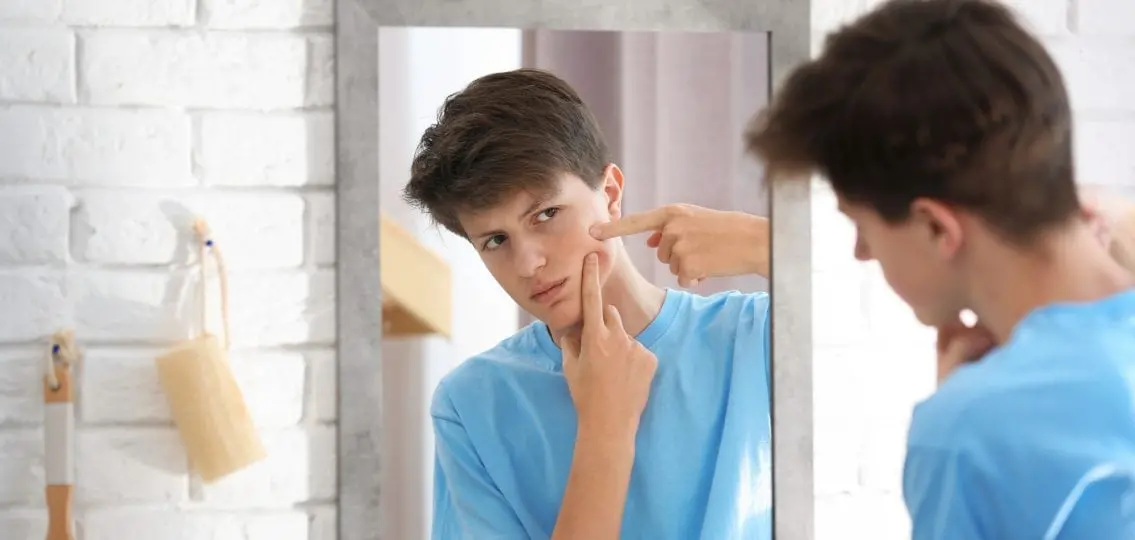Like many teen and tween boys, Maria Lianos-Carbone’s 12-year-old son wants six-pack abs. To achieve that goal, he has stopped eating sugary treats to avoid gaining fat that would potentially cover those desirable muscles. Her 14-year-old has also been worrying about his weight and what he eats.

“As they’re both engaged in sports, they’ve always been active and athletic,” says Lianos-Carbone, who runs the blog A Mother World. “They look up to their favorite athletes for inspiration and have been influenced by them with their own body image.”
Over the years, media attention about body image has focused primarily on girls, particularly because of the persistent myth that teenage girls are at highest risk for developing eating disorders. Research has found, however, that eating disorders affect people of all ages, races, and genders.
Male Body Image Issues
“A Harvard University study indicated that 25 percent of people with eating disorders are male,” explains Melainie Rogers, Founder and Executive Director of Balance Eating Disorder Treatment Center in New York. “Another study has discovered that men engage in eating disorder behaviors, including binge eating, purging, laxative abuse, and fasting, nearly as often as women.”
The issue of boys and body image has received attention, thanks in part to athletes like former Seattle Mariners baseball player Mike Marjarma. Marjarma publicly shared his struggles with an eating disorder and talked about how his disorder developed in part from male body image issues, namely his desire to achieve the perfect body he saw in the media. Marjarma’s struggle to achieve that physical ideal led to severe food restriction and purging and ultimately to in-patient treatment.
Research has found that exposure to unrealistic body imagery on social media can lead to dissatisfaction for both genders.
“Just as girls try to look like idols, boys look up to those models that are considered to be physically desirable,” says Ana Jovanovic, a licensed psychotherapist with Parenting Pod. “They are both affected by what they perceive to be societal norms.”
The key difference between boys and girls is the ideal they strive to achieve. In many cases, boys want to bulk up and have more defined muscles, while girls strive to be thinner.
“The type of body image ideal then dictates the behaviors they will then engage in to attempt to achieve that ideal,” says Rogers, “leading to starving and dieting in girls, bulking up and over-consuming protein, supplements, and steroids in boys.”
For both boys and girls, the desire to achieve a certain ideal body can lead to low self-esteem and unhealthy habits.
There are things that parents can do to help teen boys deal with male body image issues and develop healthy body images.
4 Ways to Foster a Healthy Body Image:
1. Limit social media usage.
Research suggests that the more social media a person consumes, the less satisfied they are likely to be with their bodies.
Lianos-Carbone sees that with her sons. “I do think my boys are trying to emulate what they see from their favorite YouTubers and singers/rappers, who always seem to be showing off their abs,” she says.
2. Talk with your sons about the images of men they see in the media.
Media literacy can help combat media influence on body image.
“Normalizing the idea that bodies come in many shapes and sizes is not only an important message for young girls, but for young boys as well,” explains Rogers. The National Eating Disorders Association has a media literacy toolkit on their website.
3. Emphasize the importance of traits not related to appearance.
“Support your kids in understanding what their best qualities are— creativity, intellect, passions, friendliness, etc.” says Jovanovic. “It is important that they not tie their value to their physical appearance.”
4. Know that conversations about body image may be challenging.
“Because body image issues are traditionally thought of as being a “woman’s problem,” boys are likely to feel extra shame,” says Jovanovic.

Both Rogers and Jovanovic encourage parents to engage their sons in open dialogue around body image. Keep the discussion relaxed and informal. And know that even if they’re preoccupied while you’re talking, they’re still listening.





